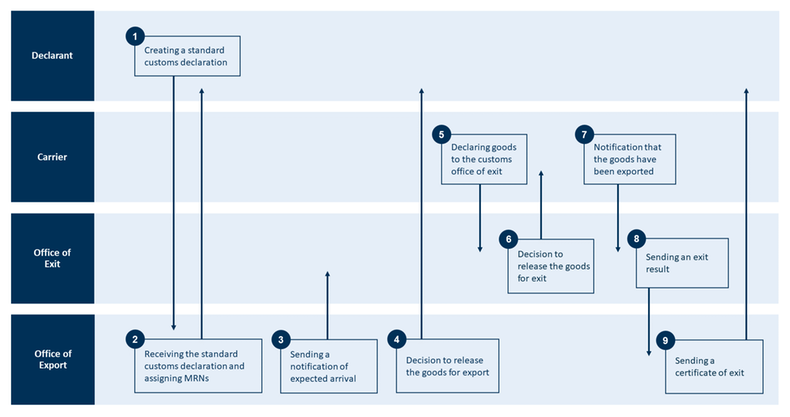Procedure for standard customs declaration for exports
When goods are exported to countries outside the customs territory of the EU, a customs declaration must be submitted to Swedish Customs. One option is to submit a complete standard customs declaration when the goods are to be exported.
The image below shows the procedure for submitting a standard customs declaration for export. Information is exchanged in separate messages. Below the image are descriptions of what happens at each stage.
 Zoom image
Zoom imageClick on the image to see it in larger format

